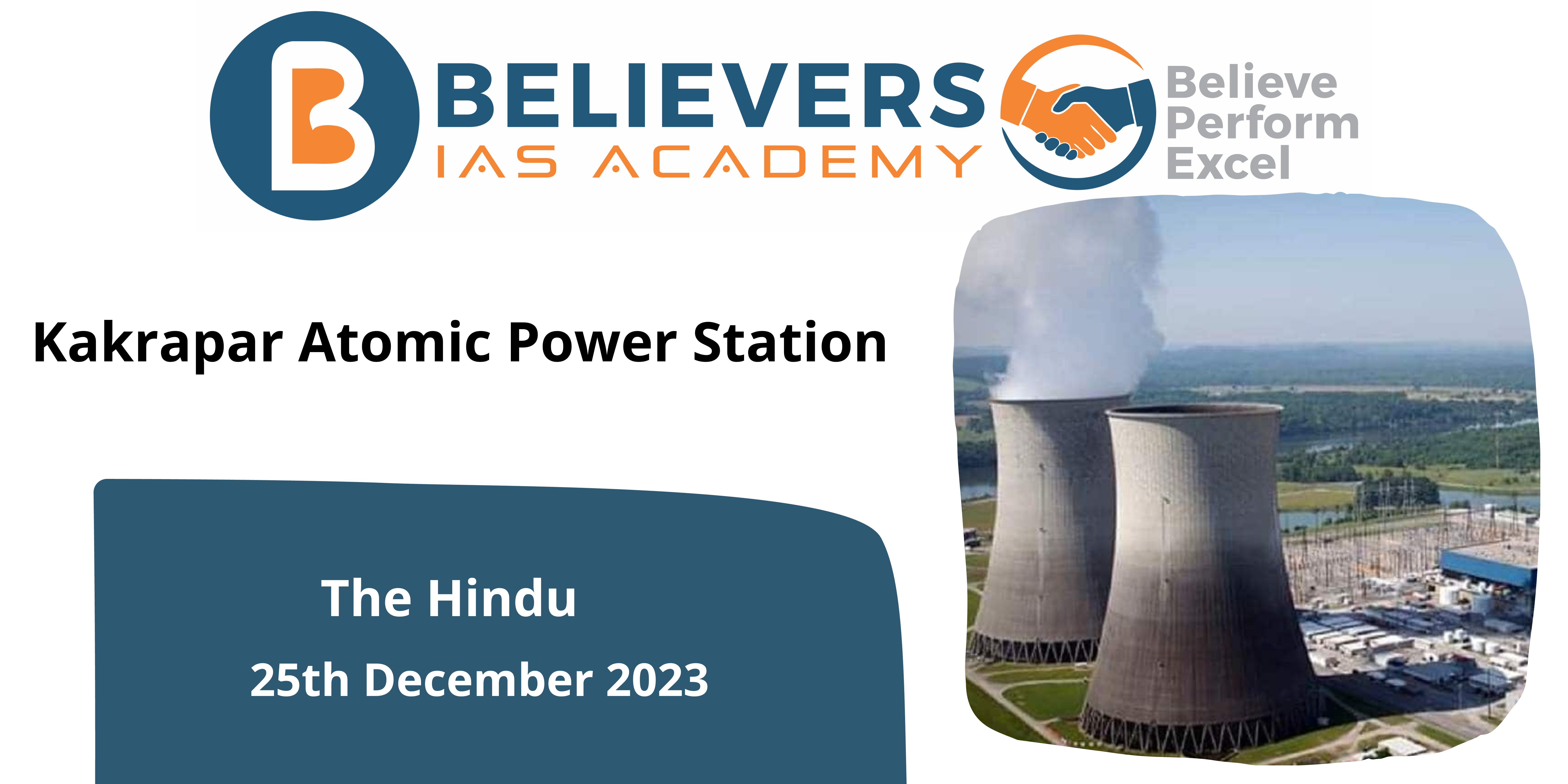Kakrapar Atomic Power Station
Context:
Recently, marking another significant leap for India’s nuclear prowess, the fourth unit of the Kakrapar Atomic Power Station (KAPS) in Gujarat has attained its inaugural Criticality.
Relevance:
GS-01, GS-03 (Mineral & Energy Resources, Nuclear Technology)
Key Highlights:
- Criticality in Nuclear Reactors: Criticality is the first step towards power generation. It is the threshold where the regulated fission reaction kicks in, initiating the process of converting nuclear energy into electricity.
- Fission Chain Reaction: The crux of criticality lies in sustaining a fission chain reaction within the nuclear fuel. This continuous splitting of atomic nuclei not only releases substantial heat but also propels the mechanism required for power production.
- Significance of Achieving First Criticality: The attainment of Criticality is a live demonstration of the reactor’s capability to sustain a controlled chain reaction. This acts as the precursor for the safe and efficient operation of nuclear facilities.
- Prelude to Power Generation: Before a nuclear reactor can become a power producer, it must undergo the crucial phase of achieving Criticality. This preliminary step is indispensable, paving the way for the subsequent scaling up of power generation for commercial utility.
Key Features of Kakrapar Reactor:
- The operational KAPS reactors, Unit-1 and Unit-2, boast a 220 MW capacity each. The upcoming projects, Unit-3 and Unit-4, with a robust 700 MW capacity, stand out as some of the safest reactors globally.
- Their innovative steel-lined inner containment systems prevent radioactive leaks during potential accidents, coupled with passive decay heat removal systems for safe cooling during shutdowns.




